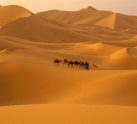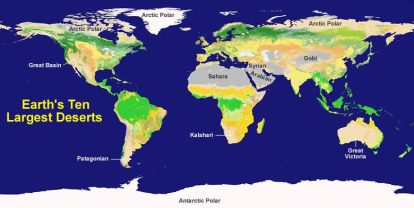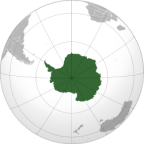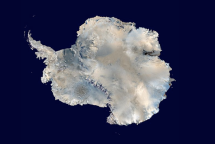
Deserts cover about 33% of the earth’s land surface. Only around 20% of the deserts on earth are covered in sand. Deserts receive less than 10 inches (254 mm) of precipitation a year and have very low humidity. They can be hot such as the Sahara and Arabian deserts or can be cold like the Arctic and Antarctic desert.
There are 33 major and 38 smaller deserts in the world that equal 71 i.e., 12 are in Africa, 1 is in Antarctica, 3 are in tharctic
basin, 26 are in Asia (including the Middle East), 10 are in Australia and New Zealand, 10 are in Europe, 4 are in North
America, and 5 are in South America

World’s deserts are divided into four categories,
1. Subtropical deserts are hot and dry throughout the year.
2.Coastal deserts have cool winters and hot summers.
3.Cold winter deserts have long dry summer and low rail fall in winter.
4.Polar Regions are the cold deserts all year round.
Top 10 Largest Deserts in the World 1 sq mile = 2.589 sq km

The largest two deserts in the world are polar deserts and both are cold i.e., the Antarctic Desert and the Arctic Desert. They are covered with ice and snow.
1st Antarctic Desert Area: about 14 million sq km Antarctica is the highest, driest, windiest, emptiest, coldest place on earth. It is known as the world’s driest desert, because in its interior region the extreme cold freezes the water vapor out of
the air. Antarctica is the coldest continent; the temperature in the winter can drop below –73°C

Antarctica is considered a desert, with annual precipitation of only 200 mm. Antarctica is located over the South Pole. For comparison, Antarctica is nearly twice the size of Australia.
The average thickness of ice is 2.0 km whereas the thickest point of ice is 4.0 km.
The area below 60 degrees south enjoys one long day and one long night each year. The sun rises in October and sets in March.
There are lots of penguins, whales, seals and krill in the Antarctic desert.
No Lacks, No rivers, No native people, No land mammals.
2nd Arctic Desert Area: 13.7 million sq km
The Arctic is considered as a desert because it gets very little precipitation.The very cold Arctic air cannot hold much moisture, and therefore it does not rain or snow very often and that makes it a desert.The Arctic desert is actually the Arctic Ocean. Eskimos and polar bears are found in the Arctic desert. It is covering the North Pole. The Arctic Desert is partially located in the United States, Canada, Finland, Greenland, Iceland, Norway, Sweden, and Russia.
3rd Sahara Desert Area: 9.1 million sq km
Sahara is the largest and hottest desert in the world and it is located in Africa spanning 12 different countries. Sahara is a sub-tropical desert and it is the hottest desert of the world with sand and dunes. It is as large as the USA or China. It is the least densely populated desert on the planet Earth i.e., 0.4 persons / sq km. The temperature ranges from 45°C to 54°C. Its population is 2.5 million.This desert obtains only 200 mm of precipitation per year. This is the main reason why only 2.5 millions of people live here.
4th Arabian Desert Area: 2.33 million sq km
The Arabian-Desert is a landscape on the planet. Both the Sahara and Arabian Deserts are known for their sand and sand dunes, which are typical images of desert landscapes. The temperature is creeping over 50°C in summer. The Arabian Desert in the Middle East is the second largest hot desert on Earth.
5th Gobi Desert Area: 1.3 million sq km
Gobi is a cool winter desert. Gobi is the deserted landscape present in Asia.The temperature of of the Gobi desert ranging from +50 °C to -40 °C. It is covered by stony, sandy soil and dry grass lands located in China and Mongolia.
6th Kalahari Desert Area: 0.9 million sq km
It is a subtropical desert in southern Africa, in Angola, Botswana, Namibia, and South Africa.
7th Patagonian Desert Area: 0.67 million sq km
The desert is mainly located in Argentina and Chile. Patagonia is a cold desert averaging 3 °C rarely reaching 10 °C .The between the Andes Mountains and Atlantic Ocean.
8th Great Victoria Desert Area: 0. 64 million sq km
Great Victoria is the largest desert in Australia. The temperature ranges from 32°C to 40°C in summers and 18°C to 40°C in winters. Habitation is healthy and increasing because of the moderate & acceptable climatic conditions.
9th Syrian Desert Area: 0.52 million sq km
It is situated in Iraq, Jordan, and Syria. (North Arabian peninsula)
10th Great Basin Desert Area: 0.49 million sq km
It is located in the United States.
Zia Ahmed Khan, e=mail: khanziaahmed50gmail.com
xxxxx